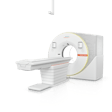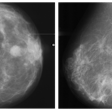CHICAGO - Incorporating an AI algorithm helps prioritize outpatient CT scans positive for cervical spine fractures -- thus reducing wait time between the exam and its interpretation, according to research presented December 4 at the RSNA meeting.
The findings could translate to better patient results, presenter Arash Mahdavi, MD, of the University of Washington in Seattle told session attendees.
"Faster interpretation for spine fractures has potential clinical implications, as it enables faster communication and management, which might lead to improved patient outcomes and resource utilization," he said. Mahdavi's team included co-author Mahmud Mossa-Basha, MD, vice-chair of Clinical Research and Clinical Transformation and co-director of Research Vascular Imaging at the university.
Cervical spine fractures pose a substantial global and national health problem, as they are associated with severe morbidity and mortality, Mahdavi explained. He and his colleagues sought to assess the triage and prioritization capabilities of AI algorithms in outpatient cervical spine fracture cases, tracking time from performance of the exam, AI analysis of it, and delivery of results to the radiologist for reporting.
The group conducted a study that included 2,009 CT scans of the cervical spine taken between September 2023 and March 2024. Of these, 1,938 (96.5%) were not processed by the AI system (AI-) and 71 (3.5%) were (AI+).
The study showed a significantly reduced median report turnaround time in the AI+ scans at 99 minutes compared to 225.7 minutes for the AI- scans -- a wait time reduction of 126.7 minutes, or 56.1%.
"[Our findings highlight the] potential for better outcomes and resource use," Mahdavi concluded.
In a related presentation delivered during the same session, Akua Amoah, MD, of Johns Hopkins University in Baltimore, MD, shared results from a study that suggested that raising the age threshold for the use of cervical spine CT scans in trauma patients could improve patient care.
Amoah's and colleagues' research included five years of cervical spine CT data collected from 21,986 exams of trauma patients (of these, 9,455 were individuals older than 65, and 12,531 were younger than 65). The investigators tracked variables such as fracture types and sites, treatments, and causes of injury and categorized patients by age (i.e., above or below 65 years).
They found that patients between the ages of 65 and 70 had a similar rate of fractures to patients under 65, which led them to conclude that "because of successful aging, healthier elderly, and safety features now in cars, it may be appropriate to extend the [cervical spine CT] age criterion to 70 to 75 years old."
For full 2024 RSNA coverage, visit our RADCast.



















